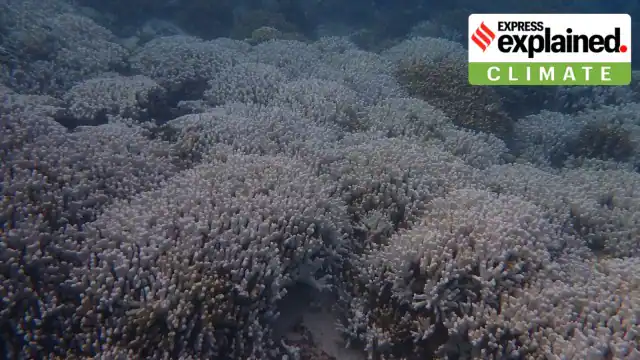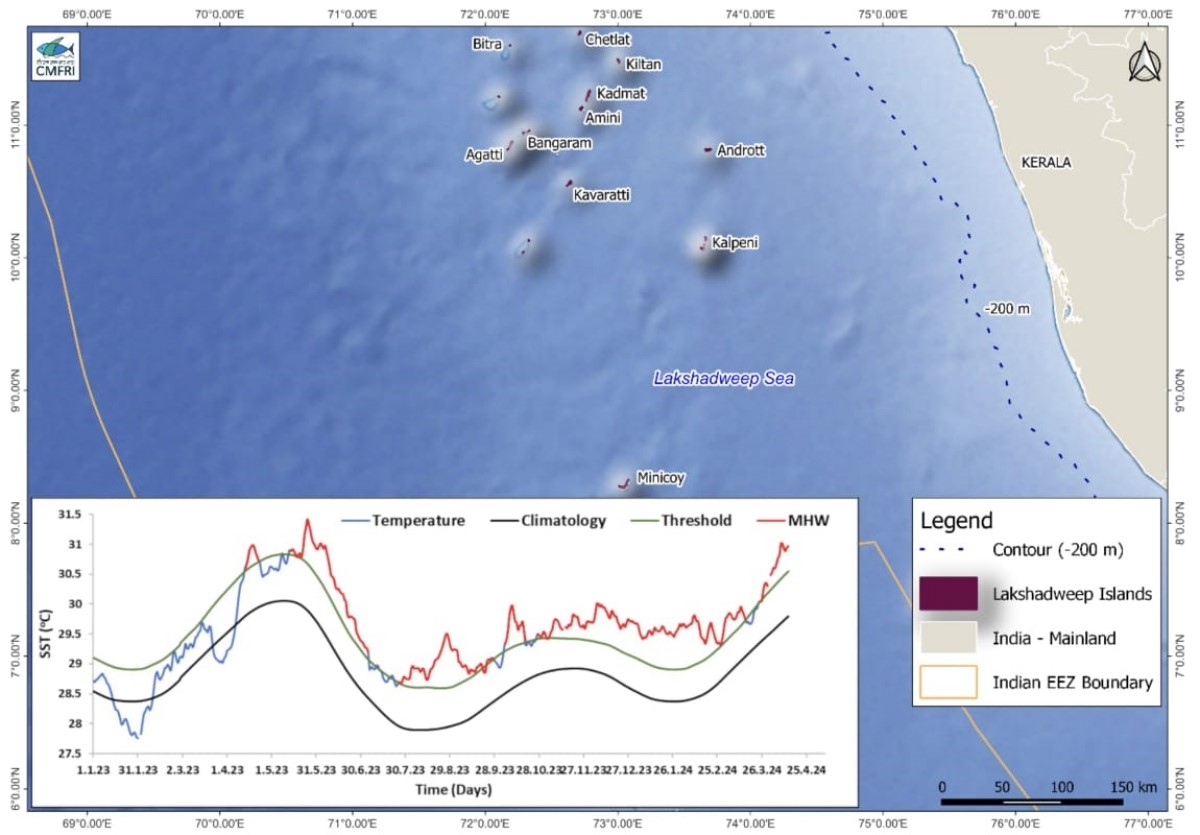Free Courses Sale ends Soon, Get It Now


Free Courses Sale ends Soon, Get It Now



Disclaimer: Copyright infringement is not intended.
Context:
Details:
How is heat stress in corals measured?

Fig: Lakshadweep Sea has been seeing above-average temperatures since Oct, 2023. (Souce: CMFRI)
Marine heat waves and coral bleaching trend in the Indian Ocean:
Impacts on Lakshadweep
|
What are coral reefs? ●Corals are sessile animals, i.e. they permanently attach themselves to the ocean floor. They are classified as either ‘hard’ or ‘soft’. ●According to the United States’ National Oceanic and Atmospheric Administration, “Hard corals have stony skeletons made out of limestone that is produced by coral polyps. When polyps die, their skeletons are left behind and used as foundations for new polyps.” ●These stony coral skeletons, over thousands and millions of years, form complex coral reefs, which have often been referred to as “rainforests of the sea” — home to thousands of marine species, and vibrant ecosystems. ●Almost all of Lakshadweep’s islands are coral atolls, with their soil largely derived from corals, and extant coral reefs around them. What is coral bleaching? ●Coral bleaching takes place when the water is too warm. In such conditions, corals expel the microscopic algae which live in their tissues, and, in simple terms, produce food for them. ●Without these algae, corals’ tissues become transparent, exposing their white skeleton. This is called coral bleaching. Bleached corals are not dead, but run the risk of starvation and disease. According to experts, without their algae, corals can survive for about two weeks. |
Source:
|
PRACTICE QUESTION Q. "Discuss the factors contributing to the severe coral bleaching in the Lakshadweep Sea, as highlighted by the recent findings of the ICAR-Central Marine Fisheries Research Institute (CMFRI). Examine the implications of coral bleaching on marine ecosystems, coastal communities, and the tourism and fisheries sectors in the region."( 250 words) |
© 2024 iasgyan. All right reserved